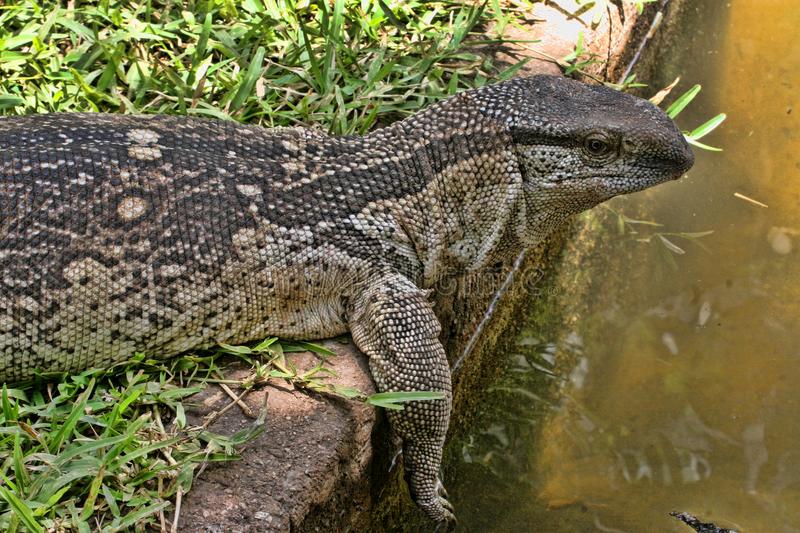ANIMAL: White-Throated Monitor Varanus albigularis Type of Animal: Monitor Habitat: Dry steppe, deserts around rock outcrops, savanna, verdant shrubland, woodlands, rock outcrops, verdant savanna-shrubland-woodland mix w/ rocky outcrops, grassland, scrub Location(s): East, S Central, & southern Africa Appearance: Gray-brown to dark brown w/ yellowish/white markings, whitish throat, long tail, big head, males larger than females Food/Diet: Insects, insect larvae, mollusks, scorpions, millipedes, lizards (including younger members of own species), snakes (including venomous species & small pythons), frogs, toads, tortoises, eggs, birds, small mammals, carrion, shrimp, crayfish, crabs, fish, worms, young crocodiles Status in Wild: Stable Conservation: Breeding from zoos, wildlife parks, & private breeders Lifestyle: Solitary Additional Info: Called: Male Female Young: Hatchling Group: Solitary Weight: Male: 18-25 lbs Female: 14 lbs Young: 4 lbs Gestation: 3 months Life Span: 20 years Body Length: Male: 4.5-6 ft Female: 3 ft Young: 1 ft Tail Length: Male: 3-3.5 ft Female: 2 ft Young: 0.5 ft Main predators of adults are leopards, large pythons, lions, crocodiles, hyenas, large raptors, wild dogs, & ratels/honey badgers. Juveniles/young eaten by adult monitors, smaller raptors, caracals, & servals. Males often fight to death over territory, slashing & biting at each other. They can run rather fast. Females lay clutches of 10-50 eggs. Similar to snakes, they have forked tongues. Females often lay eggs in termite mounds. They swallow food whole or in large pieces. Active during the day (diurnal). Sexually mature at 3 years old. Use forked tongues to sense prey/surroundings. They’re in same family as komodo dragons (monitor lizards). They’re not great swimmers & prefer being away from water. Rather than stalking/ambushing, they practice open pursuit hunting. Also called Rock Monitor, Cape Monitor, White-Throated Leguaan, & Rock Leguaan. These lizards are mostly terrestrial, but sometimes climb trees. Eat more often in wetter periods w/ lizards often fasting & losing 4% of weight in dry periods. Male territories 7 square miles & female territories 2 square miles. Less than half of hatchlings survive 1st year. Fun Fact(s): Some experiments have shown them to be able to count up to 6. Can be aggressive when young but often mellow w/ age. Some monitors can be leash trained & they’re fairly popular pets among reptile owners. Tail can be an effective weapon.

